
A 29-year-old male was referred to our clinic because of chronic disc edema in the left eye, since at least 9 months prior. He has had decreased vision in the affected left eye since about four years prior, with gradual worsening over the years. He works as an electrician, and had a history of "severe electrical shock" in 2010 which caused him to faint. He has very occasional pain in the right eye that last for 5-10 minutes, and a superotemporal scotoma in the left eye. There is no family history of any eye diseases, and he has no other complaints.
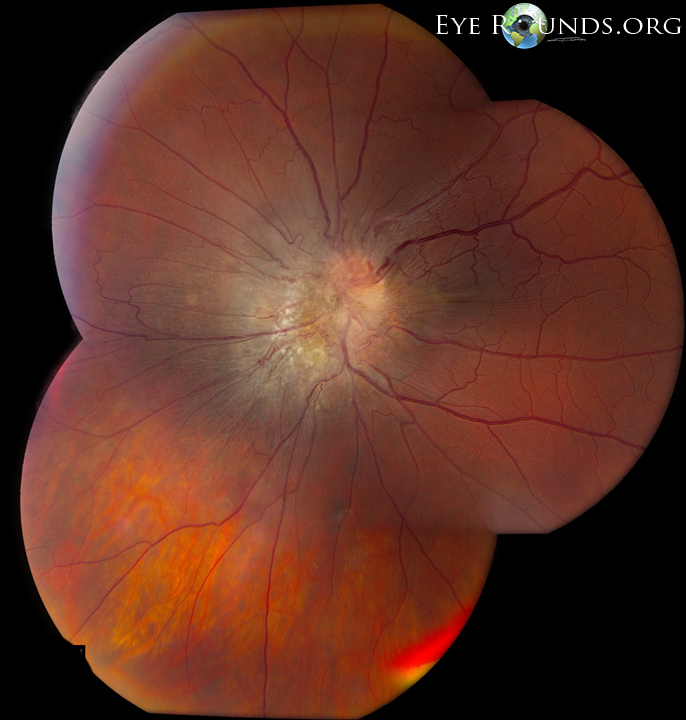
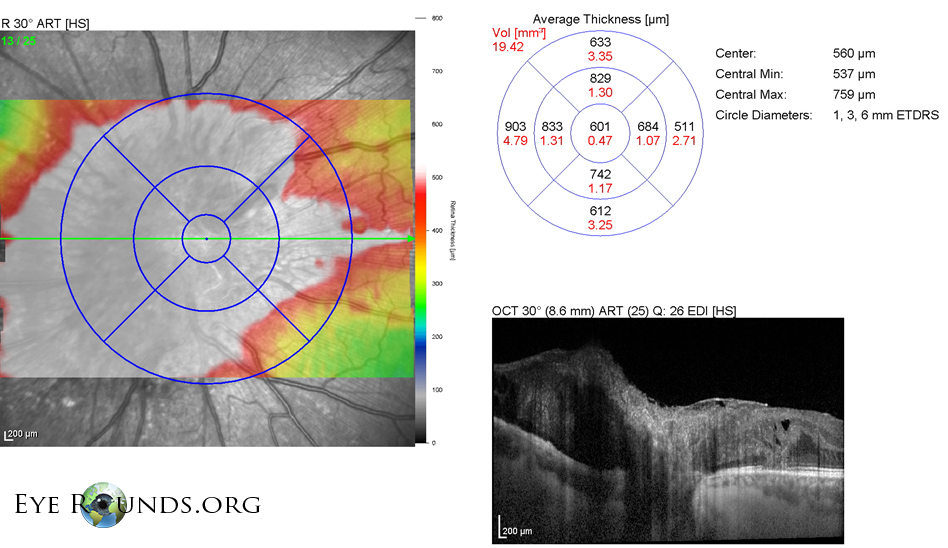
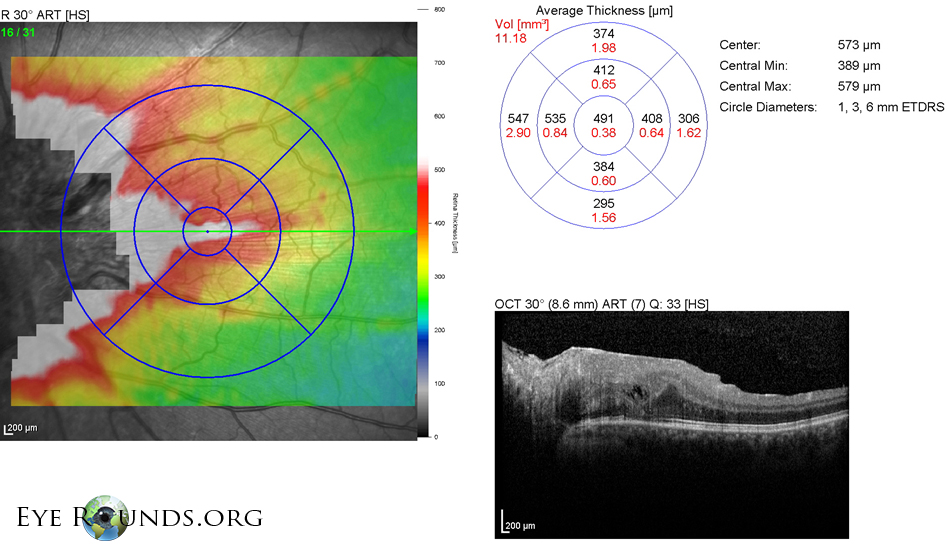

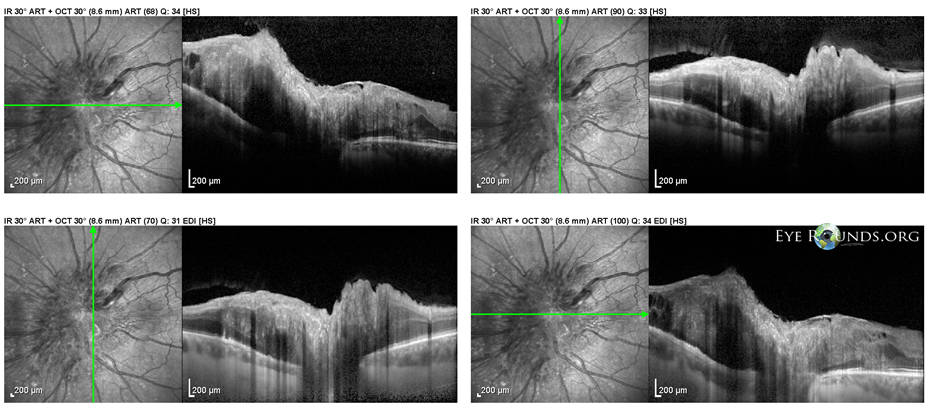

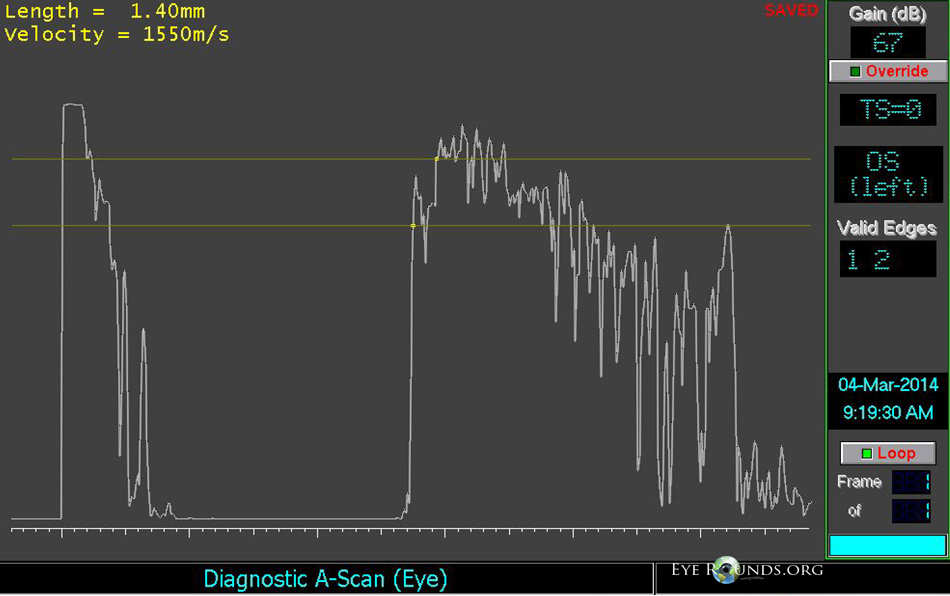

Peripapillary Combined Hamartoma of the Retina and Retinal Pigment Epithelium
The lesion is most highly consistent with a peripapillary combined hamartoma of the retina and retinal pigment epithelium OS. The lesion distorts the fovea and the peripapillary retina. There is severe contraction of the membrane at the inferonasal edge of the disc with focal areas of axoplasmic flow stasis that probably represent damage to the nerve fiber layer in this area and explain the superotemporal visual field defect.
This is a benign tumor that can affect vision. The epiretinal membrane will continue to contract and cause more vision loss. Vitrectomy and membranectomy has sometimes improved vision, but the epiretinal membranes tend to be tightly adherent and the prognosis for vision improvement is probably less than that for a typical epiretinal membrane.
Combined hamartomas can be associated with neurofibromatosis (NF) type 2 and in one case report, with NF type 1. This has potential implications for family genetic counseling.

Ophthalmic Atlas Images by EyeRounds.org, The University of Iowa are licensed under a Creative Commons Attribution-NonCommercial-NoDerivs 3.0 Unported License.